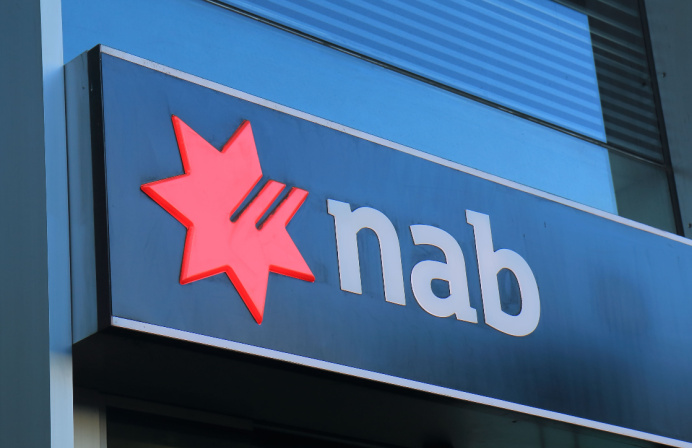
Australia’s biggest bank has earmarked $1.5 billion in loan losses resulting from coronavirus-fuelled economic contraction whilst touting a slew of digital feats in its FY20 third quarter update.
CBA’s cash profits stood at $1.3 billion, plunging 41 per cent from the previous quarter, as otherwise solid results were hit by $1.5 billion in anticipated debt provisions for the bank’s household ($860 million) and corporate ($640 million) loan books.
In a statement, chief executive officer Matt Comyn praised CBA’s “strength and resilience” both in its balance sheet and digital prowess, claiming it was “well placed to support customers” as pandemic-related shutdowns have ground Australia’s economy to a halt.
“Since the start of the pandemic, we have provided support to approximately 100,000 businesses and one million personal customers. This includes the deferral of repayments on approximately 240,000 home, business and consumer loans, lower interest rates for borrowers, increased interest rates for depositors, and waived fees and charges,” Comyn said.
“We’ve been able to do this quickly, thanks to our investments in digital banking and technology and the support of tens of thousands of people in our branches and Australia-based contact centres,” he added.
Quarterly digital leaps
Social distancing restrictions have seen CBA customers flocking to the bank’s digital service portals.
Over the quarter, CBA delivered 250 million “personalised in-app messages regarding Covid-19 support” to customers, while its Covid-19 support page amassed four million hits, with a hefty 10.2 million “peak daily logins” recorded on the CommBank app and Netbank portal.
At the same time, cash claims soared on CBA’s beefed-up digital Benefits Finder service – a streamlined facility to track and claim welfare benefits using existing CommBank credentials; the feature is accessible either in-app or online.
CBA’s Benefits Finder – touted as an “easier” alternative to interface with compared to governments’ often-complex social services web portals – saw 150,000 new claims lodged over the quarter, bumping total claims up to half a million since the feature’s launch in September 2019.
On the payments front, digital wallet transactions surged by 17 per cent between February and March, with transaction volumes rising from $844 million to over $1 billion as customers abandoned payment terminals citing coronavirus transmission risks.
According to analysis from payment giants Visa and Mastercard, this 17 per cent uptick significantly outpaced the bank’s 6.7 per cent monthly average compound growth rate in digital wallet transactions over the six months leading up to March.
Meanwhile, despite nearly two out three CBA staff (30,000 out of near 50,000 members) engaged in remote working, the bank saw employee engagement rise 13 per cent (to a total of 81 per cent) over the quarter, supposedly the highest levels seen in four years.
Comyn put this down to “the commitment and sense of pride [CBA’s] people have in supporting their customers and broader community” in trying times.
Managing the Covid-19 fallout
Financial assistance lines reportedly saw an eight-fold increase in call volumes when the pandemic first hit Australia, while the bank fielded more than one million calls and online help requests over the quarter, CBA’s trading update revealed.
With hardship requests, JobKeeper funding, and loan deferral applications coming in thick and fast, the bank claims to have “streamlined processes to fast track” these requests; for customers accessing home loan deferrals, CBA also lauded its “new automated process”.
As of 30 April, the bank had received a cumulative 144,000 requests for home loan repayment deferrals worth $50 billion, as well as 25,000 deferral requests in personal lending and 71,000 deferral requests for business loans worth $15.2 billion.
Meanwhile, drawing on the Federal Government’s SME Guarantee Scheme, CBA approved more than 6,500 loan applications for $555 million of new lending to the retail trade (18 per cent), construction (16 per cent), accommodation, cafes and restaurants (14 per cent), and business services (12 per cent) sectors.
CBA further estimates $3.6 billion was injected into the local economy as the group, donning its “Team Australia” cap, reduced interest rates for home loans, increased interest rates on 12-month term deposits and waived fees for 60,000 business merchant facilities.
Towards a simpler organisation
The bank further announced its $1.7 billion sale of a controlling stake in super fund and investment house Colonial First State (CFS) to private equity firm KKR Australia – a key step in line with CBA’s post-Hayne ambitions to become a “simpler, better bank” for customers.
In addition, the bank revealed its $85 million sale of trade execution, settlement, and clearing solutions provider Australian Investment Exchange (AUSIEX), trading as CommSec Adviser Services, to Japanese research and consulting firm Nomura Research Institute.
The CFS and CommSec Adviser Services transactions are expected to close in the first half of calendar year 2021, subject to regulatory approval and scrutiny under the Foreign Investment Review Board (FIRB).
CBA’s exit from superannuation and trade solutions follows the group’s divestment of several other non-core Australian businesses in recent years, including its CFS global asset management and CommInsure life insurance arms.
CBA also reportedly cleared the final regulatory hurdle towards divesting its Indonesian life insurance business, PT Commonwealth Life, leaving PT Commonwealth Bank as the group’s surviving subsidiary in the archipelago.





